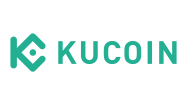-
Commitment to our readers
18 years
Helping you save money
Reviewed
by experts
Cited by
major publications
Finder maintains full editorial independence to ensure for our readers a fair assessment of the products, brands, and services we write about. That independence helps us maintain our reader's trust, which is what keeps you coming back to our site. We uphold a rigorous editorial process that ensures what we write and publish is fair, accurate, and trustworthy — and not influenced by how we make money.
We're committed to empowering our readers to make sound and often unfamiliar financial decisions.
We break down and digest information information about a topic, product, brand or service to help our readers find what they're looking for — whether that's saving money, getting better rewards or simply learning something new — and cover any questions you might not have even thought of yet. We do this by leading with empathy, leaning on plain and conversational language that speaks directly, without speaking down.
Curve Finance is a decentralized exchange (DEX). Although similar to other DEXs such as Uniswap and Balancer, Curve Finance focuses on the exchange of stablecoins, such as USDC or DAI, and on wrapped versions of assets like wBTC or tBTC.
As a result of the increase in cryptocurrency adoption and DeFi yield farming, many traders now have an increased need to swap stablecoins as efficiently and economically as possible.
Must read
Curve Finance and other DeFi protocols are experimental works in progress. Funds deposited into Curve Finance or DeFi protocols in general can be at risk of smart contract vulnerabilities, malicious developers and hacks. Curve Finance is governed by token holders through a DAO (decentralized autonomous organization).
What is Curve Finance?
Curve utilizes an automated market maker (AMM) mechanism alongside liquidity pools. By focusing on assets that behave similarly (stablecoins), Curve Finance can offer low fees, a small amount of slippage and a reduced risk of impermanent loss.
Alongside the ability to swap stablecoins, Curve Finance also rewards users that provide liquidity to the exchange. Liquidity pools remove the need to match a buyer with a seller to complete an exchange. Instead, users trade in and out of a pre-funded pool of tokens, which results in a more efficient transaction.
Curve Finance is a non-custodial service provider, so it does not have direct access to a user's cryptocurrency tokens.
How to use Curve.fi
Curve Finance works on the Ethereum network. In order to utilize Curve Finance, you need to create a web 3.0 Ethereum wallet, such as MetaMask, and connect it to the exchange.
How to use MetaMask with Curve
MetaMask is an online digital wallet created for the storage of Ethereum-based (ERC-20) cryptocurrencies. The MetaMask digital wallet is often required in order to transfer cryptocurrencies to a DEX such as Curve Finance.
How to set up MetaMask:
- Install MetaMask on your browser. Go to your browser's extension page or store and search for MetaMask (or use this link). The steps we will go through here are based on the Google Chrome browser but should still be applicable to other browsers.
- Click "Add to Chrome" followed by "Add Extension".
- Create an account and a wallet. Click on the MetaMask extension and click "Try it Now". You should be prompted to agree with the terms and conditions and to set up a password for your digital wallet.
- Write down the secret seed phrase. You will be shown a list of 12 words. This is your seed phrase and can be used for the recovery of your digital wallet if you forget your password. This seed phrase is extremely important and must not be shared with anyone else. Anyone with your seed phrase has access to your cryptocurrency. Write the 12 words down physically or store them somewhere offline like on a thumb drive.
- Verification of seed. Verify your seed phrase on the next page by selecting the words in the correct order. Once verification is complete, your MetaMask digital wallet will be ready to go.
- Deposit cryptocurrencies. Click on the MetaMask extension to view your account. You can now see your public address to which cryptocurrency can be sent from an exchange or your own hardware wallet.
Once you have cryptocurrencies on your MetaMask digital wallet, you can then connect your wallet to Curve Finance via the Curve Finance website.
How does the CRV token work?
CRV, the native token to the Curve Decentralized Autonomous Organisation (Curve DAO), runs the Curve Finance system. The token was introduced in 2020 for governance and as a reward for liquidity providers. Along with other staking rewards, liquidity providers now receive CRV when lending their cryptocurrencies to the system, which allows lenders to influence the direction of the platform.
Governance protocols allow CRV holders to vote on decisions involving the Curve Finance exchange. A holder's influence depends on the amount of CRV held and also on the time that the CRV has been held. Those holding CRV for the longest amount of time hold the most weight when voting.
Compare exchanges which offer the Curve DAO Token
Are you visiting from outside the US?
What are Curve pools?
Curve Finance relies on liquidity pools to offer the lowest amount of slippage when exchanging cryptocurrencies.
Liquidity pools are cryptocurrencies locked into smart contracts that have been lent by users. These users earn interest on what they lend. The pools help to facilitate the trading of cryptos on the DEX.
Curve Finance liquidity pools are different to those found on other exchanges due to a focus on cryptocurrencies that offer a similar volatility profile. By focusing on stablecoins, Curve offers a lending protocol that is less volatile than other platforms, while still providing high interest on the liquidity provided.
The pools are managed by the automatic market maker, which continually rebalances pools after an exchange has been made.
For example, imagine that a pool holds USDC and TUSD. A trader comes on to Curve Finance and wants to sell USDC and uses this liquidity pool.
- The pool becomes unbalanced because there is now more USDC.
- To rebalance, the price of USDC drops slightly to encourage traders to buy USDC with TUSD.
- Arbitrage traders then buy TUSD with USDC.
- The liquidity pool rebalances the ratio of USDC to TUSD.
The key point is that the incentive is always there to keep the liquidity pools balanced.
Not all pools are created equally on Curve Finance. While there are pools where liquidity providers receive a percentage of the exchange fees, there are also lending pools that involve the use of separate DeFi protocols that offer a higher rate of interest to providers.Lending Pools
The Compound pool, which is the oldest Curve pool, is denoted by cTokens. Stablecoins deposited in this pool will be lent to the Compound lending protocol in exchange for a higher return.
yPools, which are all pools denoted by yTokens, utilize tokens for Yearn Finance. The yEarn protocol searches for the best lending rates between several DeFi lending protocols. Although sometimes producing the highest return, yPools are considered the highest risk due to their dependency on multiple DeFi platforms.
Incentive Pools
The sUSD pool does not lend to another DeFi protocol, but liquidity providers can stake their liquidity tokens and earn Synthetic (SNX) tokens thanks to a partnership with Synthetix.
How to provide liquidity on Curve?
When depositing liquidity into a pool, you will gain exposure to every cryptocurrency in that pool. If a pool contains five cryptocurrencies, your stake will be distributed across the five cryptocurrencies in that pool. The ratio between tokens constantly varies.
To add liquidity to Curve:
- Open Curve.fi, where you will be prompted to connect a web 3.0 wallet. Connect your choice of wallet (MetaMask, Ledger, Trezor, Fortmatic etc.)
- Select a pool. Click on the menu icon at the top left of the website. Choose which pool you would like to provide liquidity too.
- Enter the amount of each cryptocurrency you wish to deposit in the boxes provided. There are tick options below the list of cryptocurrencies, such as "Use the maximum amount of coins available". Apply what is applicable to you.
- Click "Deposit" when ready. You will then be prompted by your connected web 3.0 wallet to allow the transaction. Check to make sure you are comfortable with the associated gas (transaction) fee.
- Once ready, you can then click "confirm" in your web 3.0 wallet to allow the transaction.
- You will then receive the associated liquidity provider (LP) tokens, which are an "IOU" for the staked tokens in Curve.
- Head to https://resources.curve.fi/lp/deposit-faqs/ to learn how to check the amount you have staked in Curve Finance.
Deposit Bonus
When depositing cryptocurrencies in a pool, it is worth noting which cryptocurrency is the lowest. Depositing the cryptocurrency with the lowest holding in a pool could result in a deposit bonus being applied. This encourages liquidity providers to keep the liquidity pools balanced.
What are the risks of Curve Finance?
Risks are inherent within the cryptocurrency sector and should be evaluated before entering a protocol or purchasing any cryptocurrency. As with any investment, only deposit what you are willing to lose. Curve Finance has been audited by Trail of Bits, but that does not mean the protocol is free from risk.
Curve Finance is primarily built on stablecoin pools. Stablecoins are pegged to an underlying asset such as the US dollar. If a peg fails on a stablecoin resulting in prices falling, liquidity providers of that pool will likely only hold the unpegged stablecoin rather than the usual split.
Curve can supply liquidity to known partners such as yearn.finance and Compound. This is done to achieve greater returns for liquidity providers and is often referred to as "composability". However, with close interaction and reliance comes an inevitable risk of chain collapse. A problem with a connected DeFi protocol could result in damage to Curve Finance.
Impermanent loss
Impermanent loss is always a risk when using an automated market maker such as the one on Curve Finance. Impermanent loss occurs if the price of the asset provided for liquidity changes in price compared to when you deposited. A liquidity provider could potentially make more money if they had held on to the digital asset instead of providing liquidity. This effect is reduced at Curve, due to the focus on assets that maintain a similar price (stablecoins).
Pros and cons of Curve
Pros- Low transactional fees. Thanks to the liquidity pools and automated market maker, transaction fees associated with exchanges are some of the lowest in DeFi. However, this isn't the full picture – you will still need to pay Ethereum gas fees, which can range as high as $80 for a single transaction during times of extreme congestion.
- Simplicity of smart contracts. As Curve Finance smart contracts are some of the simplest in the DeFi space, they are some of the best with regards to security and efficiency.
- Reduced risk of impermanent loss. Although not impossible, the risk of impermanent loss is lessened on Curve, thanks to a focus on stablecoins.
- Risk from separate DeFi protocols. To improve returns, Curve Finance integrates with multiple DeFi protocols, which leaves the system vulnerable to issues arising from a separate DeFi system.
- High fluctuation in liquidity returns. Liquidity pools returning a high annual percentage yield (APY) can often reduce to a low APY over time.
- Ethereum fees. Curve has plans for other blockchains, but currently only operates on Ethereum, which as of May 2021 is plagued with high gas (transaction) fees. Make sure to use a tool like Ethereum Gas Station to calculate what your transaction fees will be before using Curve.
Whether products shown are available to you is subject to individual provider sole approval and discretion in accordance with the eligibility criteria and T&Cs on the provider website.
Ask a question
More guides on Finder
-
What is a DAO? Decentralized Autonomous Organizations explained
DAOs are already replacing traditional business models and revolutionizing the world of investing. Find out how they work and how to invest.
-
Lido Staking
Lido’s liquid staking allows investors holding LUNA and less than 32 ETH to reap the rewards of DeFi staking.
-
DeFi and Web3 wallets
Find out how a Web3 wallet can allow you to access the world of DeFi, plus discover which wallets we recommend.
-
DeFi tokens: A simple guide for beginners
DeFi tokens compose a prominent sector in the cryptocurrency markets. Learn the basics of these tokens here.
-
A guide to using the Loopring Decentralized Exchange
Learn how to save on Ethereum gas fees by using the Loopring decentralized exchange, and earn money as a liquidity provider.
-
DeFi guide: How to use MakerDAO and mint DAI
Read our step-by-step guide on the MakerDAO platform. Find out how it works and how to grant loans using cryptocurrency holdings.
-
What is Compound Finance?
We explore how to use Compound Finance for lending and borrowing.
-
How to use Zapper.fi to manage DeFi liquidity
Learn how to manage DeFi investments with Zapper.fi. We present the pros, cons and risks associated with this liquidity management tool.
-
Uniswap beginner’s guide: How to trade and provide liquidity
Learn how to trade or earn money by providing liquidity on Uniswap, Ethereum’s biggest decentralized exchange.






